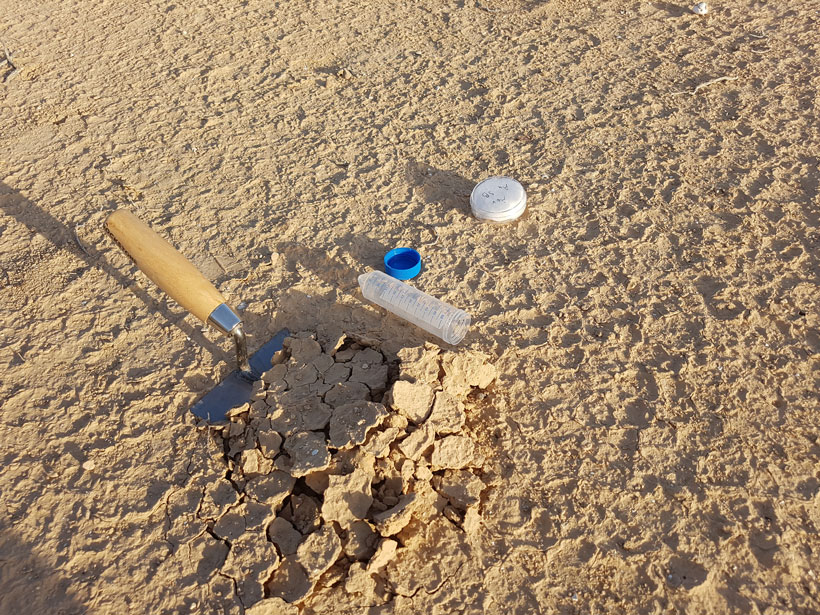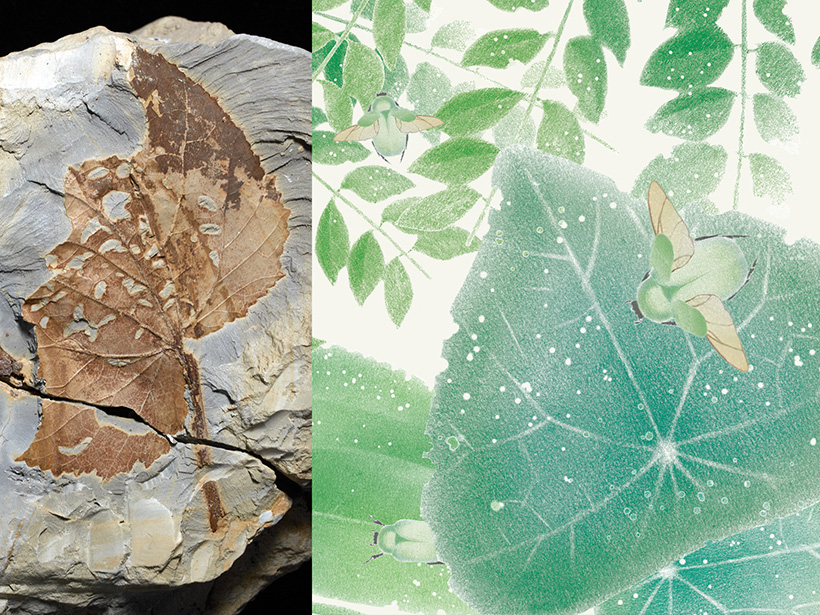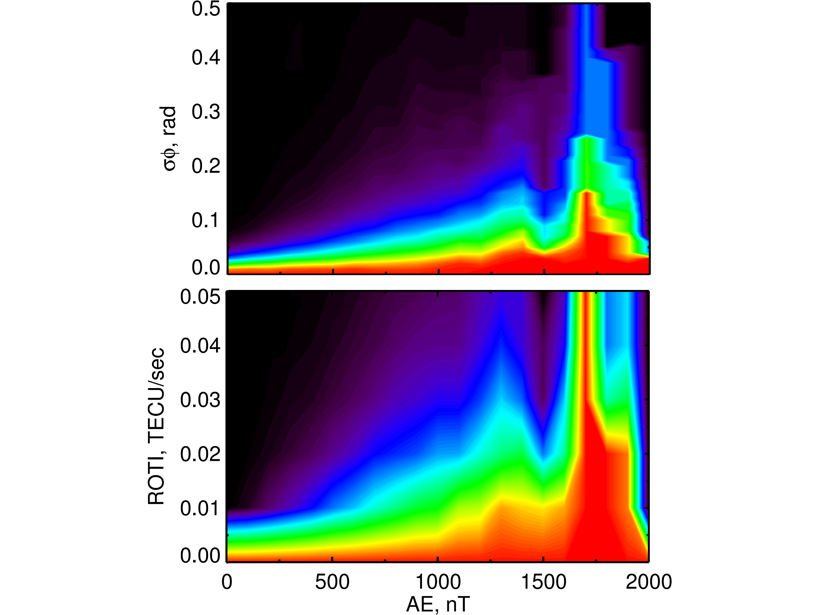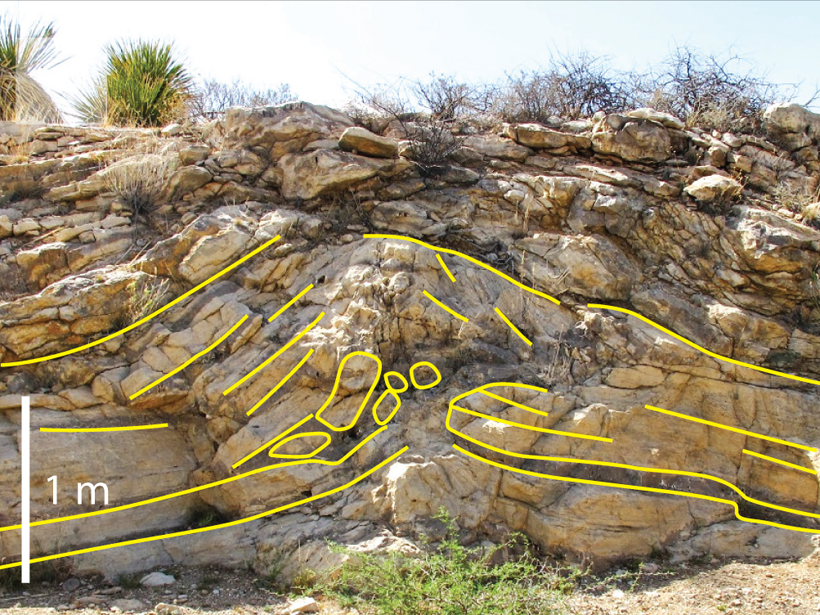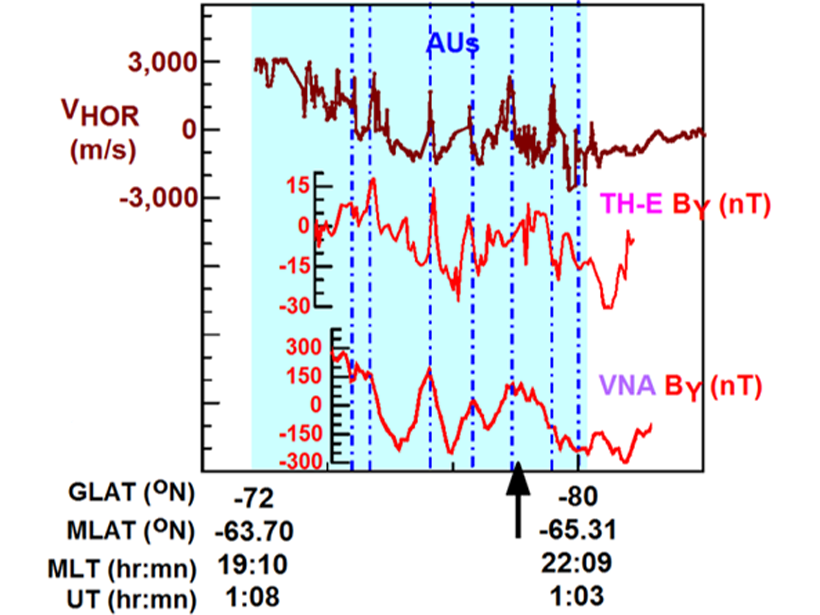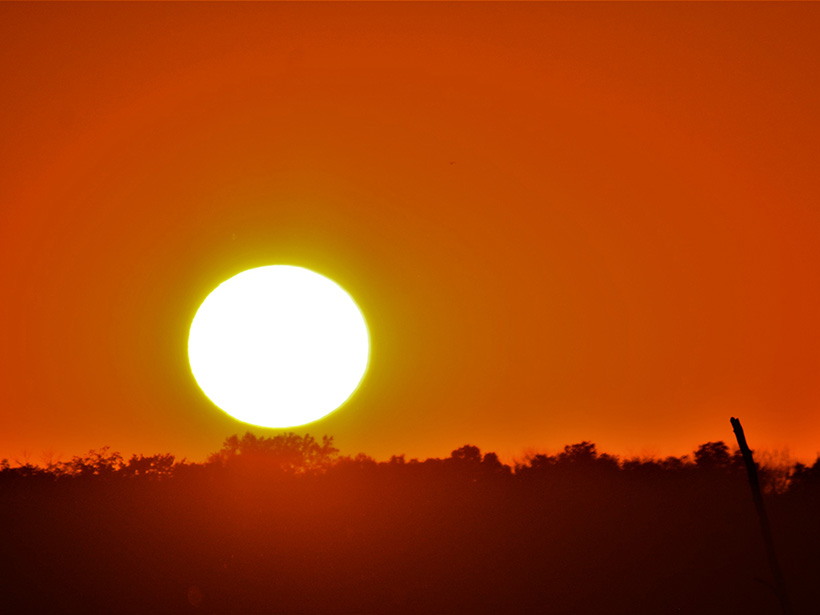Without water, photosynthesis shuts down. To survive dry spells, desert microbes scavenge traces of hydrogen from the air and burn it for energy. Some even use hydrogen to fuel carbon fixation.
2021 CC BY-NC-ND
El impacto de Chicxulub cambió para siempre la biodiversidad de la selva tropical
Hace sesenta y seis millones de años, un asteroide reinició la mayor parte de la vida en la Tierra. Pero sin este evento catastrófico, la composición de las selvas tropicales neotropicales no sería la misma.
The Auroral E-region is a Source for Ionospheric Scintillation
Observations reveal a connection between auroral particle precipitation and scintillation, indicating that the ionospheric E-region is a key source region for phase scintillation at auroral latitudes.
Sedimentary Tepees Record Ocean Chemistry
Sedimentary structures from evaporative coastal environments indicate carbonate saturation, offer insight in mid-Mesozoic ocean chemistry and potentially even earlier times.
Don’t Call It a Supervolcano
Living in Geologic Time: Scientists dismantle the myths of Yellowstone.
A New Practical Guide to Using Python for Earth Observation
A new book presents an example-driven collection of basic methods, applications, and visualizations to process satellite data sets for Earth science research.
Glassy Nodules Pinpoint a Meteorite Impact
Researchers working in Chile’s Atacama Desert have collected thousands of “atacamaites” that suggest a meteorite struck the region roughly 8 million years ago.
Las mujeres aún no son escuchadas en la conversación sobre política climática
Un estudio de caso en Brasil apunta a una profunda brecha de género que aún debe abordarse en el debate sobre la formulación de políticas.
Satellite Data Reveal Magnetospause K-H Waves Impact Auroras
Analysis of multiple satellite data has revealed a striking connection between K-H waves on the magnetopause, surface waves in the hot zone near the plasmapause, and auroral undulations.
Rapidly Increasing Chance of Record-Shattering Heat Extremes
A new study warns that we need to expect and prepare for unprecedented heat waves in the near future.

